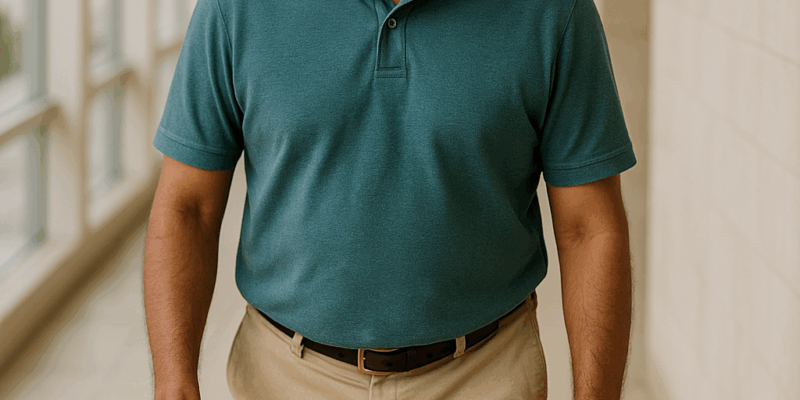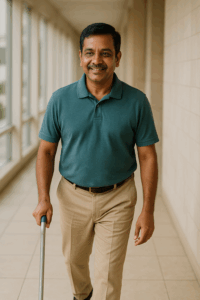Why Platelet-Rich Stroma (PRS) Outperforms PRP and Radiofrequency Ablation for Knee Arthritis:
Why Platelet-Rich Stroma (PRS) Is Superior to PRP and Radiofrequency Ablation for Knee Arthritis
Knee arthritis is one of the most common causes of chronic pain and disability in older adults. As the condition progresses, many patients explore different treatment options—PRP injections, steroid shots, hyaluronic acid, or even radiofrequency ablation (RFA).
However, not all treatments address the root cause of the disease.
In this detailed explanation, Dr A.K. Venkatachalam, Orthopaedic Surgeon and interventional orthopaedics specialist at Orthobiologic Surgery India, breaks down why Platelet-Rich Stroma (PRS) is a far more effective, logical, and long-lasting solution for knee arthritis compared to PRP and RFA.
The Patient’s Story: A Common Journey With Knee Pain
A 64-year-old patient with chronic knee pain had already undergone:
-
Steroid injections
-
Multiple consultations
-
Recommendations for PRP
-
Advice to undergo radiofrequency genicular nerve ablation
Yet, the pain continued to worsen.
Many patients face a similar path—trying temporary solutions that address symptoms rather than the disease. This is where PRS stands apart.
Why Radiofrequency Ablation Fails Patients in the Long Run
Radiofrequency ablation is often marketed as a minimally invasive pain-relief procedure. It works by burning or damaging the genicular nerves that carry pain signals from the knee to the brain.
But the problems with RFA are significant:
1. Relief is short-lived
Ablated nerves regenerate within 9–12 months, bringing back the same pain.
2. It does not treat the disease
RFA treats only pain, not the underlying cartilage degeneration, inflammation, or joint damage.
3. It may worsen joint health
Destroying sensory nerves can lead to altered joint loading and unnoticed injury.
This mechanism mirrors Charcot’s neuropathic joint, seen in diabetics and patients with neurological disorders, where loss of sensation accelerates joint destruction.
4. No regenerative benefit
RFA cannot repair cartilage, restore joint lubrication, or reduce inflammatory mediators.
Conclusion:
RFA is not a regenerative therapy and is not suitable for patients seeking long-term recovery.
Why PRS (Platelet-Rich Stroma) Is Biologically Superior
PRS is an advanced orthobiologic treatment that combines three powerful regenerative components:
1. High-Concentration Platelet-Rich Plasma (PRP)
PRP delivers growth factors that reduce inflammation and stimulate cell repair.
2. Adipose-Derived Medicinal Signalling Cells (MSCs)
Formerly called stem cells, these MSCs are harvested from the patient’s own fat tissue.
Why fat?
Because fat contains nearly 500 times more MSCs than bone marrow, making it an ideal regenerative source.
These cells:
-
Reduce inflammation
-
Promote cartilage repair
-
Support tendon, ligament, and synovial healing
-
Regenerate microvasculature
3. Bone Marrow Concentrate (BMAC)
Bone marrow cells provide additional cytokines and growth factors for targeted healing.
The PRS Advantage:
Combining PRP + fat-derived MSCs + bone marrow signals creates a powerful regenerative environment inside the knee.
Patients often experience improvements lasting 2 to 10 years, significantly longer than PRP or RFA.
Emerging Advances: Nanofat and Micronized Fat
Dr Venkatachalam also highlights innovations like:
-
Nanofat
-
Micronized fat
These contain even higher concentrations of stromal vascular fraction (SVF) and growth factors, offering potentially longer-lasting and enhanced outcomes for knee arthritis.
Such techniques are shaping the future of biologic joint rejuvenation.
Why PRS Makes Scientific and Clinical Sense
PRS is a true regenerative therapy because it:
✔ Treats the root cause—degeneration and inflammation
✔ Restores biological balance inside the joint
✔ Delays or avoids knee replacement in many patients
✔ Is minimally invasive
✔ Uses your body’s own healing power
✔ Provides multi-year relief rather than months
Unlike RFA, which destroys, PRS restores.
Conclusion
Platelet-Rich Stroma (PRS) stands far superior to PRP and radiofrequency ablation because it is biologically rational, logically restorative, and clinically powerful.
RFA only blocks pain temporarily, while PRS actively repairs, rejuvenates, and regenerates joint tissues—leading to long-lasting relief and better knee function.
If you are suffering from knee arthritis and want a scientifically grounded regenerative solution, PRS may be the right option for you.
For Appointments & Enquiries
📧 Email: drvenkatjoints@gmail.com
📞 Call/WhatsApp: +91 78240 03400
🌐 Website: www.orthobiologicsurgeryindia.com



